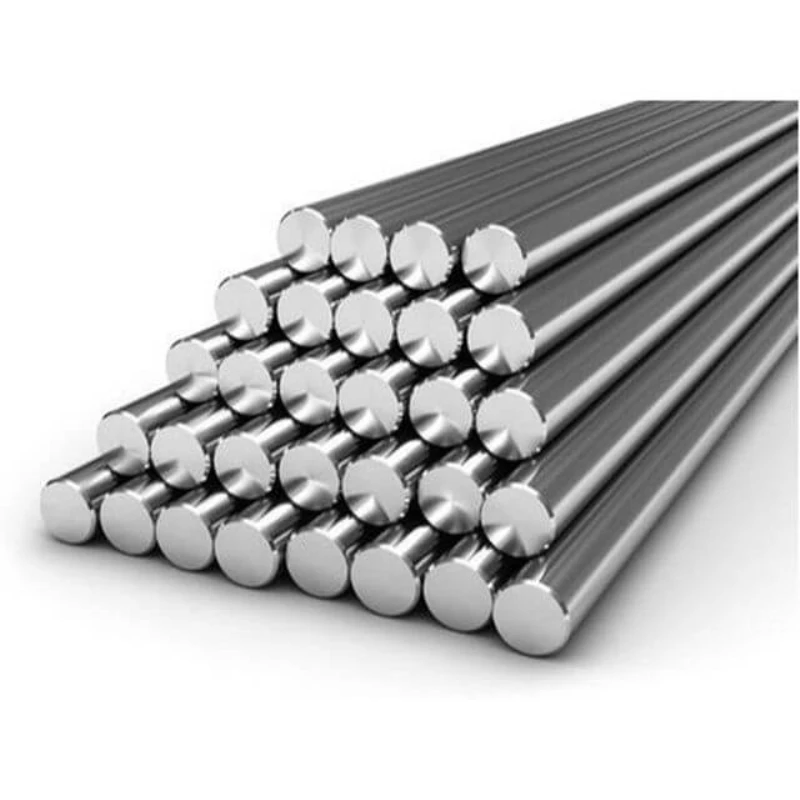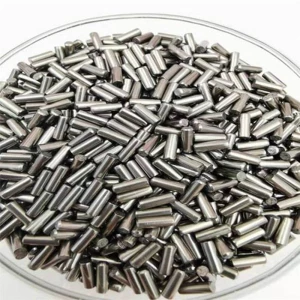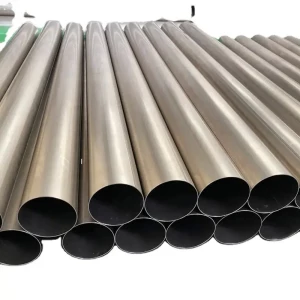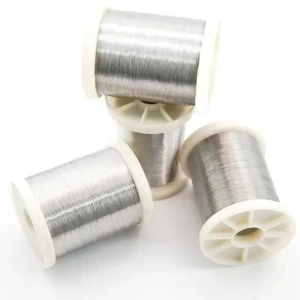Grade 7 Titanium Alloy Round Bar is an alloy formed by adding a small amount of the noble metal Pd to pure titanium, which has excellent corrosion resistance to acidic media, without the presence of toxic by-products Al and V. It will be a high quality material to replace pure titanium and Ti-6Al-4V for biomedical implantation.
Grade 7 Titanium Alloy Round Bar contain 0.2% Pd. Gr.7 titanium alloy can reduce the corrosion rate from 48.26mm/a (industrial pure titanium) to 0.508mm/a in 5% boiling sulfuric acid, improving the corrosion resistance by about 95 times. The alloy has good processing, forming and welding properties, but contains the precious metal Pd and is relatively expensive.
Titanium Gr 7 Bar and Rod Specification
| Product Name | Grade 7 Titanium Alloy Round Bar |
| Standard | ASTM B348, AST M F67/136,AMS4928 |
| Material | titanium (Grade 7) |
| Size | Dia 2.0mm ~300mm,length is 6000mm (Max). |
| Type | Round Bar, square Bar, Hex Bar |
| Technique | Polished,Grinded, Rolled, Forged |
| Condition | M,Y,M |
| Test | Water pressure test |
| Package Method | Wooden case, and Customer requirements |
| Payment way | T/T, L/C, can be negotitated. |
| Transportation | Sea(FCL/LCL), airplane, express(TNT/DHL/FEDEX) |
| Port | Shanghai,Tianjin,Qingdao |
| Certificate | EN10204 3.1/3.2 as required. |
| Chemical components as below | |||||||||||
| Grade 7 | N | C | H | Fe | O | Al | V | Pd | Mo | Ni | Ti |
| 0.03 | 0.08 | 0.015 | 0.3 | 0.25 | / | / | 0.12~0.25 | / | / | balance | |
| Mechanical Property | |||||
| Grade 7 | Tensile strength(min) | Yeild strength(min) | Elongation(%) | ||
| ksi | MPa | ksi | MPa | 20 | |
| 50 | 345 | 40 | 275 | ||
Application of titanium alloy Gr7
Ti Grade 7-Pd alloys include Ti-0.2Pd, Ti-0.15Pd and Ti-0.13Pd. Among them, Ti-0.2Pd is used in many applications. Heaters, pumps, valves, centrifuges, separators, pipes, fittings, electrolyzers.
Factory introduction
Shaanxi Zhuohangxin Metal Material Co. LTD Technology is one of Asian leading suppliers of high performance titanium base in China,specializing in mill products such as titanium and nickel bars, rods, plates, forgings, fasteners and tubes. And refractory metal processing work for around 20years.
Titanium Billets and Bars
Grade:
GR.1, GR.2, GR.3, GR.4, GR.5 (Ti-6Al-4V), GR.7 (Ti- 0.12~0.25Pd), GR.9(Ti-3Al-2.5V) , GR.12(Ti-0.3Mo-0.8Ni), GR.23 ( Ti-6Al-4V ELI)
T35, T40, T50, T60, TA6V, 3.7024, 3.7034, 3.7055, 3.7064, 3.7164, 3.7165
Standards:
ASTM B348/ ASTM F136/ ISO 5832-3/ ASTM F67/ ISO 5832-2/ AMS 4928 and other standards.
Process:
Titanium Sponge- Compacting Electrodes- Double VAR Melting-UT testing- Peeling and Cutting- Ingots-Forging- Billets- Rolling/Precisely Forging- Annealing- Machining-UT testing- Polishing/Grinding- Inspection/Testing- Packing.
Grade 7 is α-titanium alloy with similar technological and mechanical properties to industrial pure titanium. When the amount of Pd added to titanium reaches 0.1-0.2%, the corrosion rate of titanium in sulfuric acid and hydrochloric acid decreases significantly, and the further increase of Pd content makes the corrosion rate of the alloy almost unchanged. However, when the content of Pd is lower than 0.05%, the corrosion rate increases. When the acid concentration is low, the titanium and palladium alloy containing 0.13%Pd has satisfactory corrosion resistance, but when the acid concentration is high, Ti-0.2Pd has better corrosion resistance, so it is more suitable to use Ti-0.2Pd.
The data show that the corrosion resistance of Ti-0.2Pd in reducing medium is obviously better than that of industrial pure titanium, and the corrosion resistance of the welding zone of Ti-0.2Pd is the same as that of the base material. Compared with deaerated in air-filled hydrochloric acid, the stabilization potential of Ti-0.2Pd is significantly positive, and the corrosion rate can be reduced by 10 times. However, in argon-filled or nitrogen-filled acid solution, the passivation performance of Ti-0.2Pd decreases obviously when the volume of the solution of the sample per unit area increases. Therefore, the use of Ti-0.2Pd should be avoided in the complete absence of oxygen or oxidant. The addition of a small amount of palladium to Grade 7 titanium alloy improved the corrosion resistance in oxidizing media, especially the resistance to crevice corrosion. Therefore, it is widely used in hydrochloric acid, sulfuric acid, phosphoric acid, nitric acid and chloride corrosion media.
Abbiamo più categorie per te. Se non riesci a trovare i prodotti che desideri sopra, compila il modulo e dicci quali prodotti desideri importare dalla Cina.






















